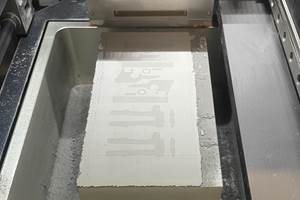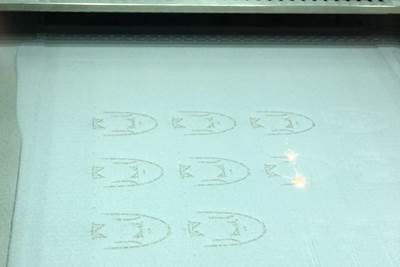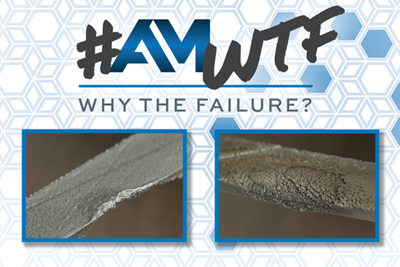Video: What Is Laser Powder Bed Fusion (LPBF)?
Laser powder bed fusion is likely the most widely used metal additive manufacturing process. Here is how it works, including benefits, issues to consider and applications for this 3D printing technology.
Share
Laser powder bed fusion (LPBF) is one of the most commonly used metal 3D printing processes. The process can deliver complex features, optimized geometries, lightweight parts and intricate designs. But, it’s not as simple as just pressing print. Learn how laser powder bed fusion works, as well as the capabilities, limitations and suitable applications for this 3D printing process, in the video below.
Related Resources
- AM: Why The Failure? video series
- Powder Bed Fusion 101
- Some applications for LPBF: implants, fuel nozzles, engine components, automotive parts, brackets
- More additive manufacturing basics
Transcript
Peter Zelinski
Laser powder bed fusion. Probably the most widely used metal additive manufacturing process. We write about it all the time. We talk about it all the time. I don't know that we've ever explained it. I’m Pete Zelinski.
Stephanie Hendrixson
And I'm Stephanie Hendrixson. In this video, that's exactly what we're going to do. We're going to define leaser powder bed fusion, talk about the benefits and the issues to be aware of, and try to put it into context. But first things first: basics. Pete, what is laser powder bed fusion?
Peter Zelinski
Well, let's take apart that phrase, right? Laser powder bed fusion. Powder bed fusion is one of the fundamental categories of 3D printing. People imagine 3D printing, and they visualize a moving extruder kind of depositing material. That's one way to do it. With powder bed fusion, the material is in powder form in a bed and an energy source moves through that bed to fuse the material together. In laser powder, bed fusion, a laser beam’s the energy source, it moves very precisely in the shape of the part that it's 3D printing. When we talk about laser powder bed fusion, we're almost always talking about metal 3D printing. But that doesn't quite complete the picture, does it? How does laser powder bed fusion work?
Stephanie Hendrixson
Right, so laser powder bed fusion is a process that takes place inside an enclosed 3D printer. You have a substrate, a build platform that's made of metal, and there's a recoater or a roller that spreads a really thin layer of metal powder across that build platform. And then at that point, the laser comes on selectively melts just the powder that you need to form the cross section for that layer of the part, the build plate drops down, a new layer of powder is spread and the process repeats until you have finished printing the entire geometry of your part. So that's kind of the simplified explanation of how the process works. But what else do we need to know?
Peter Zelinski
So you mentioned the build plate; that's really important. The part is welded to that plate as it's being built. It is buttressed and anchored by support structures that attach it to that plate. And just part of what those support structures are doing is holding the incomplete part against distorting from the thermal effects of the heat that the laser is introducing. Those support structures are sacrificial material, and they get cut away. What else do we need to know?
Stephanie Hendrixson
Yeah, so postprocessing — everything that happens after the print. It's not like you can just open up the 3D printer and pull your completed metal parts out. Because at the end of your print, you have those solid metal parts that are welded to the build plate, probably have those support structures attached, and then they're inside of all of the loose unused powder that was also part of the print. So before you can do anything, you have to remove all of that extra material, then you need to heat treat your entire build platform parts and everything to relieve any of the stresses that might have built up, then you can cut your parts off the build plate, then you can remove the support structures. But keep in mind that laser powder bed fusion is going to leave sort of a rough surface finish on your parts. So you're probably going to need to do some type of finish machining, if not things like drilling and tapping holes to get to the final completed part. What else?
Peter Zelinski
We’ve got to talk about the powder, that's pretty significant. Laser powder bed fusion uses very fine metal powder and that calls for some handling considerations. That powder is potentially a respiratory hazard, potentially a flammability hazard. The procedures and practices and safety equipment for dealing with these hazards are proven. They're well understood; they're practiced every day. But for the company that's getting into laser powder bed fusion for the first time, understanding the safety precautions getting the right safety equipment, that's part of the investment. It's not an impediment, apparently because this is a widely used mode of 3D printing. Why is it so widely used?
Stephanie Hendrixson
So laser powder bed fusion has a lot of great benefits. It helps you get to a near-net shape metal part more quickly than say a forging or a casting, because you don't need any tooling. You can just 3D print that part directly. It has a lot of design benefits. So like a lot of other 3D printing technologies, it's very compatible with like assembly consolidation, where you're taking things that might have been a couple of different parts assembled together and putting them together as one piece. It's also great for working with generative design or topology optimization. You can create the shapes that are really lightweight and very efficient without using a whole lot of material. Less waste is another benefit. So if you think about like machining a bracket out of a block of material, you're going to create a lot of scrap and form in the form of chips while you're trying to get down to the final shape of that bracket. Whereas if you were to 3D print it with laser powder bed fusion, you would just be applying the amount of metal that you need to build that form. And then there are some material advantages as well. There are some materials like we see a lot of prints made of titanium. Titanium is challenging to machine but not that difficult relatively to 3D print using laser powder bed fusion. So those are kind of some broad advantages, but let's talk about specifics. What are the applications that make sense for this process?
Peter Zelinski
Right? Implants are a big one, medical implants we put in our body, complex metal parts. Just one of the advantages that laser powder bed fusion brings is the ability to get a very controlled surface geometry that is very well suited for bone ingrowth or natural bone fusing to the implants. Engine components. Really complicated engine components, particularly in aircraft engines. The GE Aviation fuel nozzle in their LEAP engine is kind of a famous additive manufacturing part, an early additive manufacturing success for laser powder bed fusion. This is a component with very complicated internal geometry 3D printed in one piece that used to be assembled from lots of little pieces. Mold tooling. In injection molding, sometimes in a mold tool, there's a real heat transfer problem. And with that difficult challenging section of the mold, you could make it through laser powder bed fusion, and get cooling channels on the inside just perfectly conforming to where you need the cooling fluid to go to, something that's very difficult to do with holes that are drilled with a straight drill. Space components. Components for spacecraft, satellites, because of the lightweighting that you mentioned, and there's a couple different reasons for that: the ability to use minimum material perhaps through generative design or topology optimization, but also consolidate assembly. Get rid of the weight of fasteners, the weight of like screws or rivets. So weight savings in spacecraft very, very important but some of these same lightweighting concepts and advantages being applied even to automobiles, sort of like niche-ier type car production are beginning to use laser powder bed fusion components and brackets. Brackets are huge. You mentioned brackets, so 3D printing to connect to members in an assembly — use laser powder bed fusion to get exactly the geometry you want with the minimum use of material.
Stephanie Hendrixson
So there are a lot of different ways that laser powder bed fusion is being used. But I think we should also mention that this is kind of a difficult and tricky process there are just a lot of variables and a lot of things that can potentially go wrong. So throughout this video we've been showing you a lot of successful examples of laser powder bed fusion, but if you want to learn more about those potential pitfalls and how to avoid them, check out our video series AM WTF, Why the Failure?, which you can find on the Additive Manufacturing YouTube channel.
Peter Zelinski
Right. So for a lot more about the applications of laser powder bed fusion, the technologies, the successes, the failures, check out AdditiveManufacturing.Media. We've got a lot of information there.
Stephanie Hendrixson
Thanks for watching.
Related Content
Beehive Industries Is Going Big on Small-Scale Engines Made Through Additive Manufacturing
Backed by decades of experience in both aviation and additive, the company is now laser-focused on a single goal: developing, proving and scaling production of engines providing 5,000 lbs of thrust or less.
Read More3D Printed Cutting Tool for Large Transmission Part: The Cool Parts Show Bonus
A boring tool that was once 30 kg challenged the performance of the machining center using it. The replacement tool is 11.5 kg, and more efficient as well, thanks to generative design.
Read MoreAM 101: What Is Binder Jetting? (Includes Video)
Binder jetting requires no support structures, is accurate and repeatable, and is said to eliminate dimensional distortion problems common in some high-heat 3D technologies. Here is a look at how binder jetting works and its benefits for additive manufacturing.
Read More3D Printed Titanium Replaces Aluminum for Unmanned Aircraft Wing Splice: The Cool Parts Show #72
Rapid Plasma Deposition produces the near-net-shape preform for a newly designed wing splice for remotely piloted aircraft from General Atomics. The Cool Parts Show visits Norsk Titanium, where this part is made.
Read MoreRead Next
What is Powder Bed Fusion 3D Printing?
Whether in metal or polymer, with a laser or an electron beam, powder bed fusion (PBF) is one of the most widely used 3D printing techniques.
Read MoreMetal 3D Printed Part Should Be Flat, Has Bubble — AM: Why the Failure? #1
What should have been a straightforward application of laser powder bed fusion to make a simple component in 316L stainless steel turned into a printing fail. See why the failure happened.
Read MoreAlquist 3D Looks Toward a Carbon-Sequestering Future with 3D Printed Infrastructure
The Colorado startup aims to reduce the carbon footprint of new buildings, homes and city infrastructure with robotic 3D printing and a specialized geopolymer material.
Read More.jpg;width=70;height=70;mode=crop)







